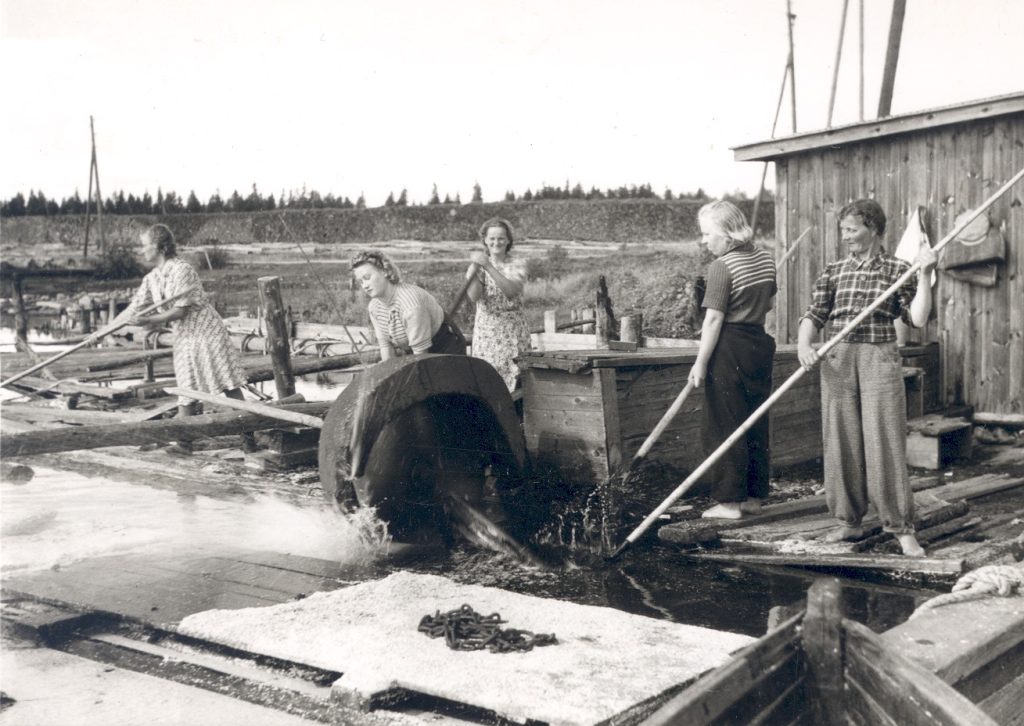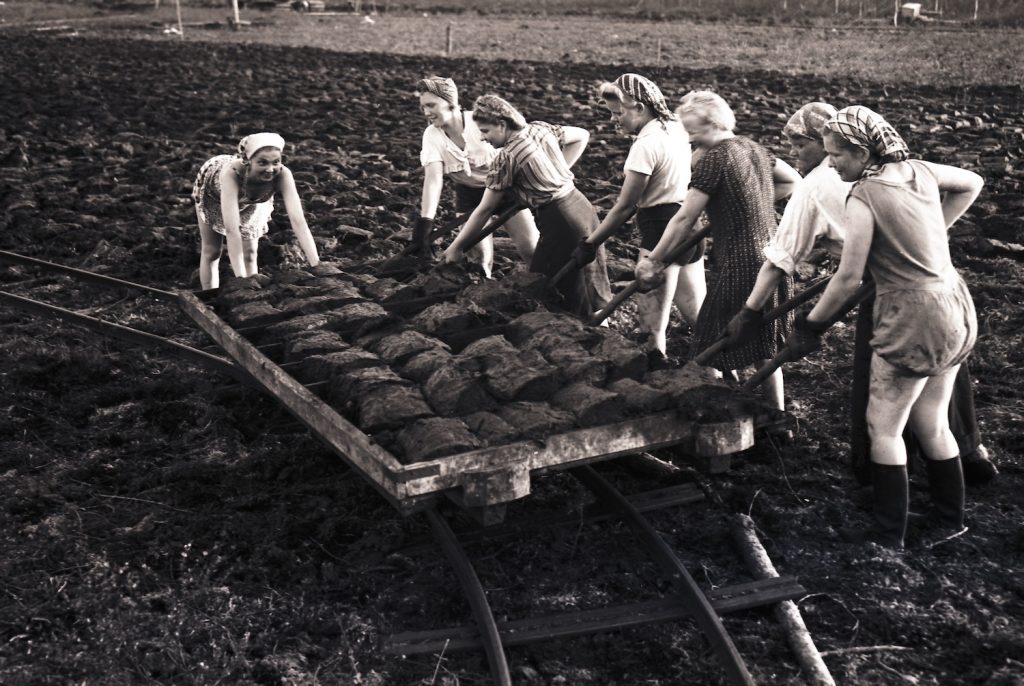Women by the pike pole
JUNE 2023
Serlachius Museums’ photographic collection comprises some images from the time of the continuation war depicting people working. They have been transported from Tampere to participate in obligatory work at G. A. Serlachius company’s timber yard in Sassi in Mänttä. In the pictures, women are using pike poles to drive lumber towards the circular saw at the waterfront or tightening a raft.
The in June 1939 enacted law on obligatory work was extended in May 1942. The aim was to harness all labour resources and secure the availability of workforce in branches that served the defence of the country or were necessary for the livelihood of the population or for the economy.
G. A. Serlachius company’s mills and forest department also suffered from acute labour shortage. On 2 January 1942, district forester Erkki Luikko wrote in a letter to Gösta Serlachius who was at Mehiläinen hospital in Helsinki due his heart trouble:
Along with my wishes for good health and recovery for Gösta I desire to notify of certain matters concerning the forest department as follows: altogether 11 women are working in actual logging or as horsemen. All district foremen have been given the order to try to increase female workforce. Also, every engineer has been notified of forest department’s desire to employ female labour which will be equipped with tools, but no contacted party has extended their help. It seems that the freezing temperature is the main reason for the women not to dare go into the woods.
In autumn 1941, half of the employees at G. A. Serlachius Company’s Mänttä mills were in military service. So, women were hired to manufacture grenade shells in the workshop and to work on the paper machines, among other things. To ease the labour shortage, already pensioned former workers were hired and when the schools were out, also young boys. Even the prisoners of war were put to work.
Finland suffered from immense shortage of firewood. To relieve the shortage, the entire nation participated in a voluntary firewood harvesting campaign during the years 1942–1943. Households in Mänttä were able to receive their firewood from the timber yard located at Sassinniemi headland. Also, the firewood of the mills and wood material for the digesters at pulp mill had its store in Sassi area.
In a book Sata vuotta Sassinniemeä (1999) (Sassi headland’s one hundred years), Martti, Tauno and Jaakko Kuoppala have described the task of women who arrived from Tampere to Sassi to do their obligatory work. The women were boarded at a workers’ quarters and assigned with lighter loading work, among other things. The ones that were in good working shape, loaded split logs of wood from prams.
Over few summers, mainly female workers from Tampere doing their obligatory work were employed to cut the logs on the jetty of Sassi lift. Wood used for manufacturing pulp were cut in one metre fixed length. A circular saw attached to a barrel ferry was brought from the local Kolho sawmill to cut the lumber. There were normally five workers in two shifts working on the ferry: driver, feeder, cutter, catcher and one that drove the lumber off.
The World War II has been considered a turning point for women entering paid labour. Correspondingly, number of women working at mills increased, but in Finland, women’s proportion in industrial workforce had already previously been high. The concept of work suitable for women changed during the war but expectations placed on women remained ambivalent. Evidently, the ideal after the war was that married women would stay at home doing housework and taking care of the children even though most of the women at some point in their life worked outside home.
Sources
Gösta Serlachius’ letter archive. Correspondence of Gösta Serlachius and Erkki Luikko.
Hytönen, Kirsi-Maria 2014. ”Ei elämääni lomia mahtunut.” Naisten muistelukerrontaa palkkatyöstä talvi- ja jatkosotien ja jälleenrakennuksen aikana. [Holiday had no place in my life. Women’s accounts on employment during winter and continuation war and reconstruction.] Kultaneito XIII Suomen Kansantietouden Tutkijain Seura.
Kontio, Erkki O. & Bondsdorff, Lars G. von, 1968. G. A. Serlachius Oy 1868–1968.
Kuoppala, Martti & Kuoppala, Tauno & Kuoppala Jaakko 1999. Sata vuotta Sassinniemeä. [Sassi Headland’s one hundred years], Jyväskylän tekninen ammattioppilaitos.
Metsäosaston historiikki [History of the Forest Department]. G. A. Serlachius Oy 1868–1968.



